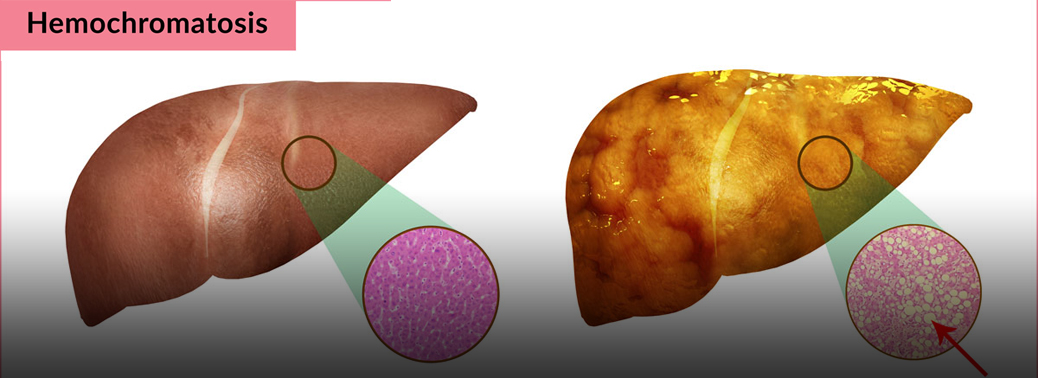Hemochromatosis- Iron Overload Disease
24, Aug 2018

Prelims level : Health
Mains level :
- Researchers at the Institute of Genomics and Integrative Biology (CSIR-IGIB) have successfully discovered a pathway that regulates hepcidin hormone production by Gene mutations.
About:
- The hepcidin hormone which is released by the liver, is a central regulator of iron in the body.
- Dysregulation of the hormone leads to anaemia on one hand and excess iron accumulation in organs such as liver and heart leading to multi-organ failure.
- Hepcidin hormone is low in the hemochromatosis patients, and that this causes iron overload.
- Mutations in about six genes are known to cause reduction in hepcidin hormone production thereby causing excess iron accumulation.
- This is the first time that researchers have been able to identify and tell that the NFkB pathway regulates liver hepcidin production.
- In India, Hemochromatosis is still not commonly seen, perhaps because of our underlying iron deficiency. But Thalassemia, is a serious problem where iron overload is very common.
Hemochromatosis:
- Hemochromatosis causes your body to absorb too much iron from the food you eat. Excess iron is stored in your organs, especially your liver, heart and pancreas.
- Too much iron can lead to life-threatening conditions, such as liver disease, heart problems and diabetes.
Cause:
- Hereditary hemochromatosis is caused by a mutation in a gene that controls the amount of iron your body absorbs from the food you eat.
- The genes that cause hemochromatosis are inherited, but only a minority of people who have the genes ever develop serious problems.
Symptoms:
- Early symptoms include Joint pain, Abdominal pain, Fatigue, Weakness Later symptoms include Diabetes, Loss of sex drive, Impotence, Heart failure, Liver failure.
- Some people with hereditary hemochromatosis never has symptoms. Hereditary hemochromatosis is present at birth. But, most people don’t experience signs and symptoms until later in life usually between the ages of 50 and 60 in men and after age 60 in women. Women are more likely to develop symptoms after menopause, when they no longer lose iron with menstruation and pregnancy.
Treatment:
- Treatment includes regularly removing blood from your body. Because much of the body’s iron is contained in red blood cells, this treatment lowers iron levels.






